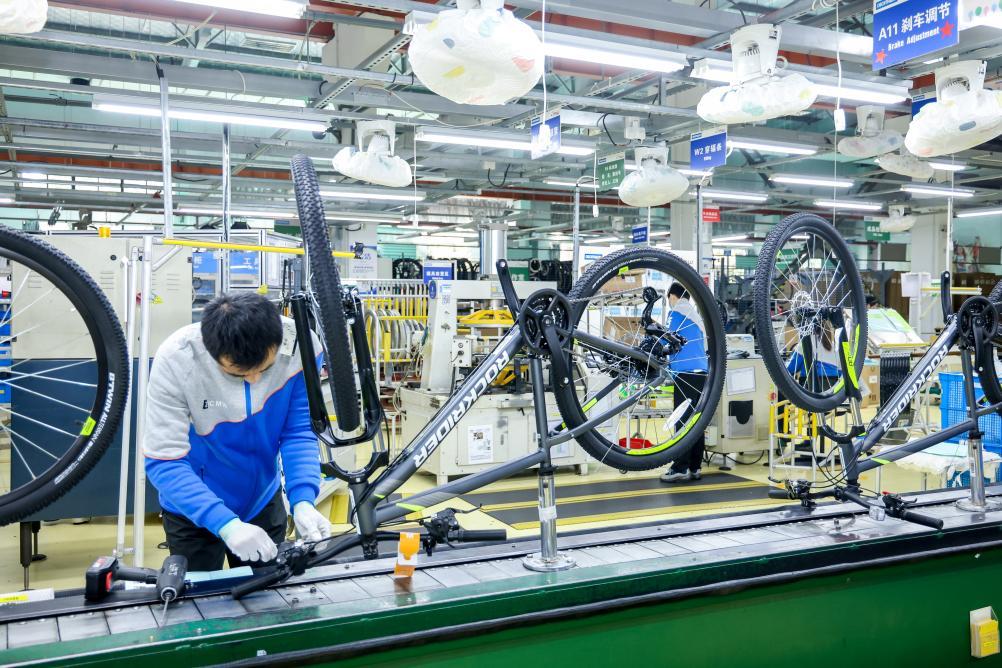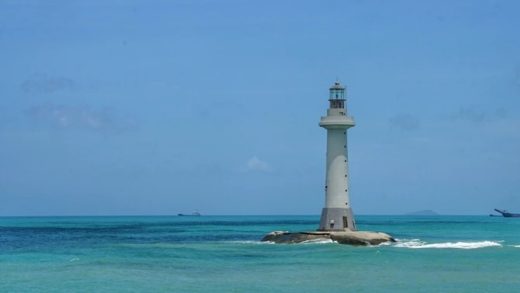
Positive Comments: Decathlon’s Exploration of High-End Market is a Market Breakthrough in Line with the Trend
Decathlon’s recent strategic adjustment, the transformation from a “paradise for budget shoppers” to a “mid-range brand”, is essentially an active response to the upgrading of the Chinese sports consumer market. The market sensitivity and supply chain capabilities demonstrated during its exploration still hold considerable positive significance.
Firstly, Decathlon’s move towards the high-end market is a precise capture of the emerging trend of middle-class sports. In recent years, Chinese consumers’ sports needs have been upgraded from “functional satisfaction” to “quality and social experiences”. “Middle-class sports” such as yoga, cycling, and camping have become new consumption hotspots. According to the Tmall data mentioned in the news, the prices of the top 30 brands in the outdoor sports field have generally increased by 25% – 65%, indicating a significant increase in the market’s acceptance of mid – to high – end sports products. As a “full – scenario sports supermarket” covering over 60 sports categories, Decathlon, leveraging the user insights accumulated over more than 20 years in the Chinese market (such as aligning the design of yoga pants with Lululemon and having a size system friendly to plus – size women), quickly adjusted its product portfolio. It increased the SKUs of categories like yoga, cycling, and outdoor sports by 30%, 200%, and 40% respectively, and launched the high – end sub – brand VAN RYSEL, effectively keeping up with this trend. This ability of “rapid new product launch + precise targeting” reflects the flexibility of its supply chain – the localized layout of self – built factories and 94% of products being made in China enables it to respond to market demands faster than international competitors.
Secondly, Decathlon’s brand image upgrade has opened up new growth space. In the past, Decathlon was labeled as “cheap” due to its “old – fashioned and ugly” designs and the positioning of “out – of – town hypermarkets”, which limited the consumption ceiling of its customer base to some extent. In recent years, through actions such as changing the logo, optimizing designs (such as making yoga pants more fashionable), and opening boutique stores in core business districts, Decathlon has successfully attracted new middle – class and female customers. These customers are less price – sensitive but value brand tonality and social attributes more. As mentioned in the news, Decathlon’s yoga pants are hailed as a “paradise for plus – size girls” because of “improved design + comprehensive size range”, which is a direct result of its brand image upgrade. This transformation not only increases the unit price of products (the average price in 2024 was 196.32 yuan, a 52% increase compared to 2022) but also provides the possibility for the improvement of gross profit margin (for example, the gross profit margin of VAN RYSEL’s top – of – the – line bicycles reaches 40%).
Finally, Decathlon’s exploration of the high – end market provides a reference sample for the “transformation of full – category brands” in the industry. As the only global sports brand covering the entire scenario from entry – level to professional, Decathlon’s transformation is not simply about “raising prices”. Instead, it tries to find a new balance between “professionalism” and “popularity” through a combination of measures such as product function upgrading (such as carbon – plated running shoes and all – carbon fiber bicycles), design optimization (benchmarking against Lululemon), and channel adjustment (replacing hypermarkets with boutique stores). This multi – dimensional strategic adjustment provides practical experience for other brands (especially full – category brands) attempting to transform from the mass market to the mid – to high – end market on how to attract new customer groups by delving into segmented scenarios without losing the basic user base.
Negative Comments: Over – aggressive High – End Strategy and Loss of the Basic Market, Decathlon is Caught in a “Neither Here Nor There” Dilemma
Although Decathlon’s exploration of the high – end market is reasonable, two major mistakes in its strategic implementation – underestimating the competition in the high – end market and neglecting the protection of the basic market – have led it into an embarrassing situation of being “neither high – end enough nor low – end appealing”, and may even shake its foundation in the Chinese market.
Firstly, the over – aggressive high – end strategy fails to build brand identity. Decathlon has a misunderstanding of “middle – class sports”. The core of middle – class sports is “identity recognition”, rather than simply “product upgrade”. The success of brands like Lululemon and Arc’teryx lies in building users’ spiritual belonging to the brand through “community operation + cultural output” (such as Lululemon’s yoga culture and Arc’teryx’s “outdoor elite” label). However, Decathlon’s high – end transformation only stays at the level of “product price increase + design imitation”. Although VAN RYSEL has launched 70,000 – yuan all – carbon fiber bicycles, it lacks corresponding brand stories and user communities. The layout of boutique stores is not accompanied by cultural experiences (such as cycling knowledge lectures and yoga courses), resulting in consumers’ lack of recognition of its “high – end” positioning. As mentioned in the news, VAN RYSEL has not made it into the top nine in the high – end cycling field, and the sales of its top – of – the – line models account for less than 5%, which is a direct manifestation of the lack of brand identity. This “product – oriented, culture – neglected” strategy makes Decathlon’s high – end transformation a mere “price – increasing game” and difficult to truly meet the core needs of middle – class users.
Secondly, the loss of the basic market has squeezed its living space by domestic competitors. Decathlon’s “budget market” (entry – level sports products) is the foundation of its presence in the Chinese market. Relying on high cost – effectiveness and full – category coverage, it was once the “first choice” for students and sports beginners. However, in recent years, Decathlon has gradually lost this part of its users due to price increases (the price of basic mountain climbing skirts has risen from 99 yuan to 129 yuan, and yoga suits from around 100 yuan to 200 – 300 yuan) and the shift of SKU focus (reducing investment in children’s sports and entry – level running shoes). Domestic competitors (such as 361° and Camel) have accurately filled this gap. 361° has occupied 52.2% of the market share of running shoes under 200 yuan by deeply cultivating the children’s physical fitness testing track and having 75.9% of its stores located in third – tier and lower – tier cities. Camel has re – activated young users with its positioning of “upgraded appearance + must – have outfits for college students to take good – looking photos”. The news about “Decathlon losing its leading position in the entry – level product field” is essentially a result of its strategic imbalance of “emphasizing high – end while neglecting the basic”. When Decathlon tilted its resources towards VAN RYSEL, domestic competitors had completed market harvesting in its “backyard”.
More importantly, Decathlon’s brand perception has become confused. Consumers’ impressions of it still remain at “high cost – effectiveness” (recognized by 20% of users) or “too many alternatives” (reported by 25% of users), while the “mid – range brand” image it tries to convey has not been accepted (35% of users think it is “mediocre”). This perception gap has led to its high – end products being questioned for “excessive premium” and its basic products being squeezed by competitors, ultimately falling into a “neither here nor there” dilemma.
Advice for Entrepreneurs: Find a Balance between “Upgrading” and “Protecting the Foundation”
Decathlon’s case provides important inspiration for entrepreneurs. In the wave of market upgrading, enterprises should not only seize new opportunities but also protect their basic market. Brand transformation should follow the rule of “perception first” to avoid over – aggressive strategies. The following are specific suggestions:
Clarify the transformation logic: Protect the basic market first, then expand into new scenarios
Decathlon’s lesson is that it lost its basic users before the high – end transformation was successful. Entrepreneurs should remember that the basic market is the “survival line” of an enterprise, and new scenarios are the “growth line”. Before expanding into the high – end market, the basic market should be consolidated through product iteration (such as improving the quality of basic models) and service upgrading (such as providing sports guidance for entry – level users). For example, 361° has protected the sinking market by deeply cultivating the children’s physical fitness testing track and then gradually extended to the mid – to high – end market. This “defend first, then attack” strategy is more stable.Brand upgrade should be “culture – driven” rather than “product – driven”
Middle – class users’ consumption decisions are not only based on product functions but also on the values and identity recognition conveyed by the brand. If entrepreneurs want to transform to the mid – to high – end market, they need to build brand culture first – establish an emotional connection with users through community operation (such as cycling clubs and yoga communities) and content output (such as sports knowledge popularization and user stories). If Decathlon’s VAN RYSEL could carry out activities around “professional cycling culture” (such as organizing amateur races and inviting KOLs to share cycling experiences) instead of relying solely on high – priced products, it might be able to build brand identity faster.Market research should be “granular” to avoid strategic misjudgment
Decathlon underestimated the competition in the high – end cycling track because of insufficient market research. Before entering a new track, entrepreneurs need to clarify: What are the core needs of the target users? What are the advantages and disadvantages of existing competitors? Can their own resources form differentiation? For example, if Decathlon had conducted research before launching VAN RYSEL and found that Trek and Specialized had occupied the “luxury cycling” market perception, and XDS and Giant had controlled the “cost – effective cycling” market, it could have focused on “high – cost – effective professional models” (such as entry – level carbon fiber bicycles priced between 5,000 and 10,000 yuan) to avoid direct competition.Price adjustment should be “value – anchored” rather than “market – following”
Decathlon’s price increase was questioned by users for “excessive premium” because consumers did not perceive the corresponding value improvement. When entrepreneurs adjust prices, they need to let users clearly perceive the matching degree between “price and value” through “function upgrading + service value – added”. For example, if Decathlon’s yoga pants are accompanied by “free yoga courses” or “dressing guidance” while the design is optimized, users will be more likely to accept the price of 200 – 300 yuan.
In conclusion, although Decathlon has encountered obstacles in its transformation, its market sensitivity of “acting in line with the trend” and the advantages of “full – category + strong supply chain” are still worthy of reference. For entrepreneurs, finding a balance between “upgrading” and “protecting the foundation”, driving brand transformation with “cultural identity”, and supporting price adjustment with “value anchoring” can enable them to move more steadily and further in the market wave.
- Startup Commentary”Building LLMs: The Knowledge Graph Foundation Every AI Project Needs”
- Startup Commentary”The 17th Year of Tmall Double 11 and the New Map Rewritten by AI”
- Startup Commentary”How to Prepare Your Data for Artificial Intelligence”
- Startup Commentary”Small and Medium-sized Banks: “Cutting the Tail” in Loan Assistance”
- Startup Commentary”The Six AI Giants on Stage: AGI Is No Longer a “Future” Thing”





